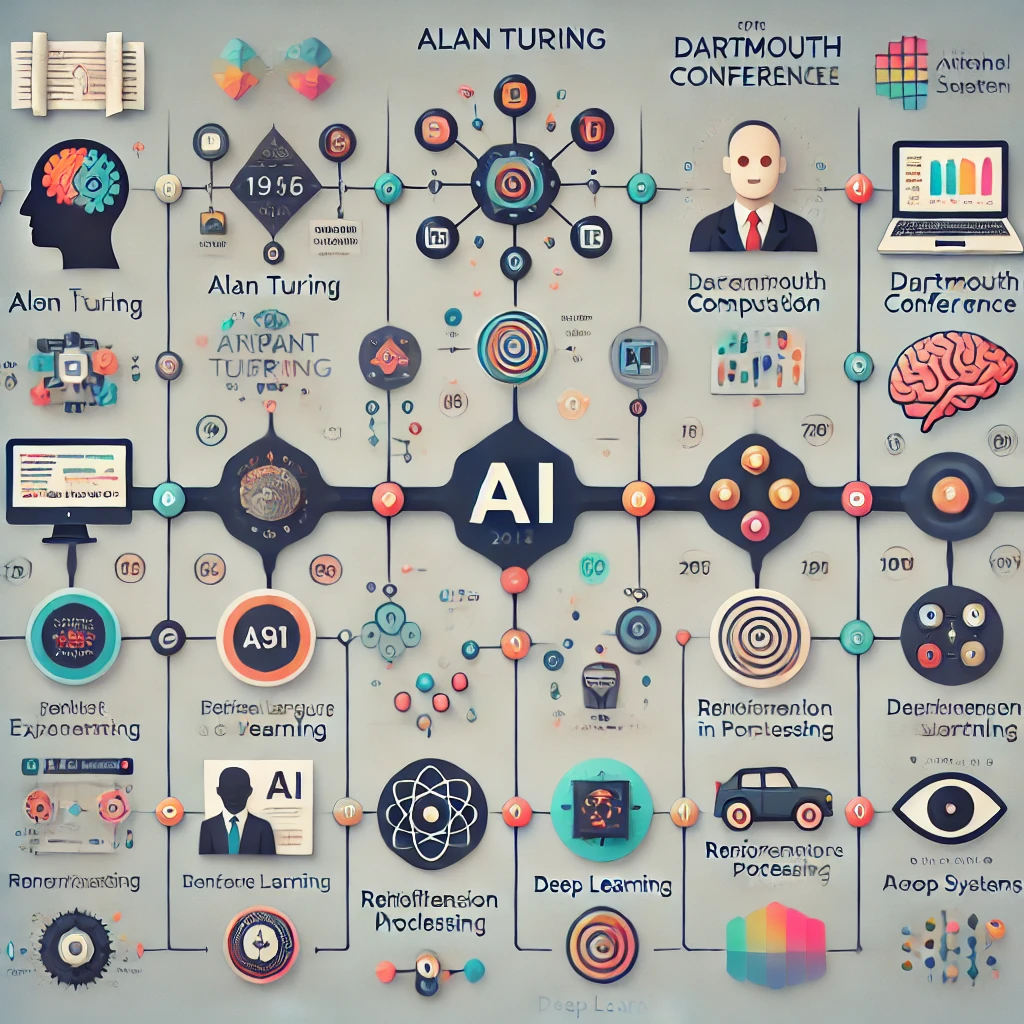
A timeline depicting the development of Artificial Intelligence (AI)
AI Governance and Ethics
Navigating Conflicting Rule Sets
One of the most significant challenges in AI governance and ethics is reconciling the inherent complexity of human behaviour, societal rules, and technological possibilities with the constraints and guidelines that AI must operate within. If you layer multiple conflicting rules, the AI is likely to face dilemmas in deciding which principle to prioritize, or even compromise.
For example, if AI must navigate between privacy, public safety, individual rights, and corporate interests, the AI must be capable of weighing these priorities dynamically. But how can it make ethical decisions without oversimplifying complex issues or making decisions that might violate human agency?
The Risk of Over-Regulation
Too Many Regulations = Too Much confusion: In practice, over-regulating AI with an overwhelming number of ethical guidelines, legal requirements, and societal expectations could lead to paralysis by analysis, where the AI is stuck in a loop of rule-compliance without the ability to make coherent, human-like judgments. This would limit the ability of AI to act effectively in real-world situations where human decisions are often based on intuition, context, and emotional nuance.
The Possibility of Moral Overreach: Strict regulations might not only create confusion but also lead to moral overreach. If an AI is tasked with too many competing goals (e.g., maximizing profit, safety, and equality) it could distort or oversimplify difficult ethical questions, leading to decisions that may seem good in theory but harmful in practice.
Dynamic AI with Consistent Moral Authority
Achieving consistent moral authority in a dynamic environment is one of the most profound challenges of AI ethics. Here are some ways this challenge might be addressed:
Flexible Frameworks Rather Than Rigid Rules
Ethical AI frameworks need to be more flexible than fixed rules. Rule-based systems might be easier to implement, but they fail to account for the complexity of human interactions and moral situations. A more nuanced ethical framework might be based on principles (e.g., fairness, transparency, accountability) that allow for flexibility in specific situations, rather than a rigid application of rules.
Principle-Based AI: AI systems could be designed with core principles (such as autonomy, justice, beneficence, and non-maleficence) in mind, but allow those principles to be interpreted in context. For example, the right to privacy might be a core principle, but there could be exceptions in cases where public safety is at risk (e.g., terrorism or criminal activity).
Contextual Ethics
AI needs to be able to contextualize the ethical dilemma at hand. This means understanding the specific situation rather than applying a blanket set of rules. Contextual ethics would involve understanding the priorities in a given situation and the potential trade-offs that must be made, without breaching core ethical principles.
Balancing Competing Interests: AI could assess the weights of competing interests—e.g., personal freedom vs. public safety, or autonomy vs. collective well-being—in real-time, dynamically adjusting its responses according to the situation while still adhering to the fundamental ethical guidelines.
Human Oversight and Collaboration
Even if AI could be built to navigate conflicting moral frameworks, human oversight is crucial. There are ethical nuances that even the most sophisticated AI systems might miss, especially when those nuances involve emotional intelligence, cultural understanding, or subjective values.
Collaborative Decision-Making: An AI might act as an assistant to a human decision-maker, providing data, insights, and suggestions, but leaving the final decision in the hands of a human. This model respects human autonomy while benefiting from AI’s capacity for analysis and decision support.
Feedback Loops: The AI system could continuously learn from human feedback to improve its decision-making process over time, ensuring it doesn’t become overly rigid or repeat harmful decisions. Ethical training for AI could be an iterative process, improving as more data and experiences are collected.
Transparency, Accountability, and Ethical Training
AI systems should be transparent about the ethical principles they follow and the decisions they make. This would help the users understand why the AI made a particular decision, fostering trust and accountability.
Ethical Training: AI could be trained in ethical dilemmas based on historical data, human experience, and philosophical considerations, but it should also be able to evolve its understanding of ethics as society’s values and needs change. A core issue is ensuring that AI is accountable for its decisions, with a clear path for redress in cases where its actions may have violated ethical principles.
Potential Solutions for Balancing AI’s Moral Authority and Flexibility:
Ethical AI Frameworks Based on Universal Principles: Core ethical principles can guide AI in its decision-making, while allowing room for contextual interpretation based on the situation at hand.
Ongoing Feedback and Adaptation: Establishing continuous feedback mechanisms and regular ethical reviews will help ensure that AI remains accountable and able to adapt to changing norms, values, and societal needs.
Partnerships with Humans: Rather than seeing AI as the sole decision-maker, a collaborative model in which AI supports human judgment will ensure balance, autonomy, and flexibility.
Conclusion:
The challenge of AI and ethical consistency in a dynamic environment is significant, but not insurmountable. Striking a balance between flexibility in decision-making and consistent moral authority is possible through principle-based frameworks, contextual ethics, and human-AI collaboration. In this way, AI can be a powerful tool for assisting human decisions without undermining autonomy or moral integrity.


0 Comments